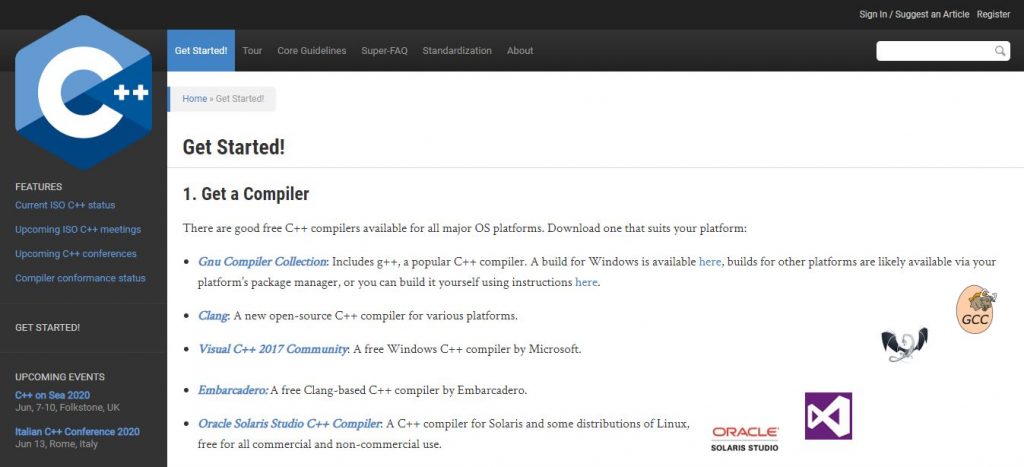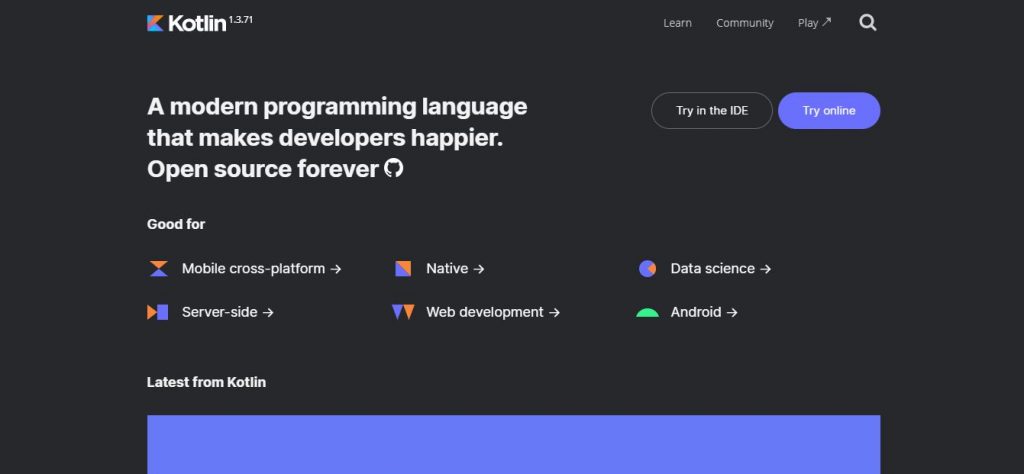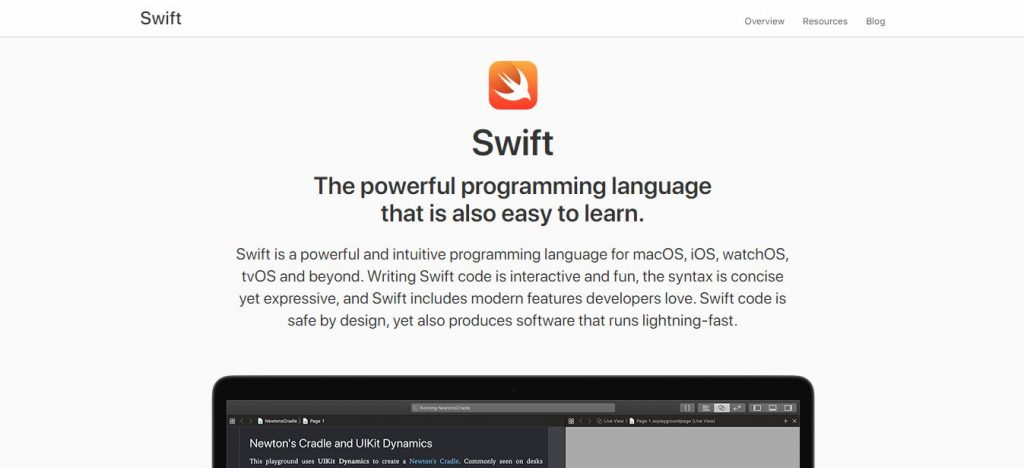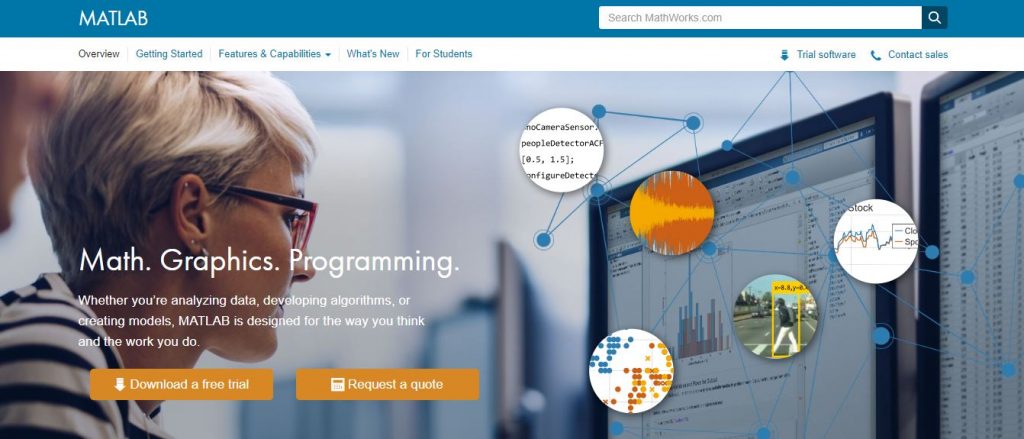
With all the advancements that we see in the IT sector lately, it is only natural that those who are responsible for building these tech wonders would want to do so more easily and efficiently. Programming languages have been around for decades, from C to C# and JAVA, vintage programming languages are responsible for creating the skeleton of software building science.
But while we can all agree that old is gold, we must not forget that 21st-century problems and needs require 21st-century solutions. So even though older programming languages are still relevant and used, we have been seeing a plethora of new programming languages land on the software and mobile application development scene that has been built using the blueprint of these older programming languages but are more efficient, streamlined, robust, and require a lot less work.
So today, we want to talk about the top 10 programming languages that will be used in the year 2020 and tell you what their pros and cons are.
1. Java
2. Python
3. C/C++
4. Javascript
5. Go lang
6. Kotlin
7. Swift
8. PHP
9. R
10. MATLAB
1. Java

Java is the most used, powerful and effective programming language with a moderate learning curve and high developer productivity. The language is strictly backward compatible which is an essential need for any business today. The language has never introduced a major breaking change like python or scala. So as a result, it is still the number one choice for enterprises today. Moreover, the language is highly popular among the Android development community and used for Android application development.
Pros
- Extensive open-source libraries
- It has a stack of the allocation system
- It has the potential for a program to perform varied tasks at the same time.
- It has a high degree of performance independence because of the JVM feature
- It is multithreaded
Cons
- There are no templates limits required to create high-quality data structures
- Its memory management is pretty expensive
- Slow in speed as compared to natively compiled languages
- The look and feel of GUI applications in Java are very different from native applications.
- The procedural paradigm is better accommodated in earlier versions of Java.
2. Python

The Python programming language is an interpreted and object-oriented language with dynamic semantics which is largely accepted as the best programming language. Python’s fast, easy to learn and use syntax emphasizes readability and hence reduces the cost of program maintenance. Its standard data structures combined with dynamic typing and binding makes it attractive for rapid application development. It is also used as a scripting language that connects existing components together. The language allows you to focus on the core functionalities and features of the web applications by taking care of common programming tasks itself. Moreover, the language has a great scope and offers a great starting point for beginners. The language also provides significant library support and contains a large community of developers.
Pros
- It has extensive library support
- Aims at code readability
- Can scale even the complex applications
- Versatile, easy to learn and implement
- Also provides support for the multitude of platforms and systems
Cons
- Slower than other programming languages
- Threading is not really good in Python because of the Global Interpreter Lock (GIL)
- Not suitable for the mobile environment
- Some programmers interpret that Python’s advantage – simplicity – is also its weak point
3. C++

C++ is a simple and great language to develop GUI. Most of the low-level systems like operating systems, file systems are written in C and C++. C++ is used by competitive programmers because it is extremely fast and stable. The extensive library support and speed of the language make it a popular choice among the high-frequency trading community as well. The language offers a Standard Template library that is used for various data structures, mathematical algorithms, and operations.
Pros
- Its portability or platform independence feature allows the user to run the same program on different operating systems.
- It is object-oriented
- C++ allows a low level of manipulation of data at a certain level
- C++ gives the programmer the provision of complete control over memory management.
- It has a rich-function library
- The C++ program is capable of running even on a small scale as well as a large scale of data.
Cons
- The standard allows for many things that probably can cause unexpected behavior.
- It does very little memory management that forces the programmer to do most of it by themselves.
- Its object orientation system is unnecessarily basic as compared to other programming languages.
- It also lacks custom operators
4. Javascript

The programming language, Javascript is used to design interactive frontend applications. For instance, when a user clicks on the button which opens a popup button, that logic is developed with Javascript. There are many organizations, specifically startups, that are using NodeJS, basically a javascript-based runtime environment. NodeJS lets the developer use Javascript for a server-side programming language to produce dynamic web page content.
Pros
- Javascript is highly versatile
- It’s easier to implement
- JavaScript, being a client-side script, speeds up the execution of the program as it saves time required to connect to the server
- The language is easy to understand and use
- JavaScript plays nicely with other programming languages and can be used in varied applications
- Regular updates through ECMA specification
Cons
- JavaScript code is viewable to the user so it is possible that others may use it for malicious purposes
- It is at times interpreted differently by different browsers
- It lacks the debugging facility
- Javascript supports single inheritance only not the multiple inheritances
- A single code error can stop the rendering of the complete JavaScript code
5. Go

It is also termed as Golang. The developers at Google conceived of Go: a language engineered for the multicore processors, cloud services, computation clusters, and networked systems. Go provides excellent support for multithreading as well. The open-source language is statically typed and produces compiled machine code binaries. This also includes a tooling set, that enables users to safely use memories, manage objects, collect garbage and provide static typing along with concurrency.
The aim behind creating Go was to combine the best features of other programming languages, such as the ease of use with state-of-art productivity, high-level efficiency with static typing, advanced performance for networking and full use of multicore power. In case you’re looking for a programming language built for solving queries and issues encountered in complex software infrastructure environments.
Pros
- Go programming language is fast, because of its compilation with machine code
- It possesses a smart standard library
- It provides a strong security built-in
- This language is backed by google
Cons
- Being simplistic is one of the Go’s biggest advantage, but it is one of its weaknesses as well
- The Go language is still a young language, that means it’s still in its adolescence, that implies that in many ways it can not compete with its older siblings
- It lacks a virtual machine
- Implicit Interface
- Poor library support
6. Kotlin

In case you are thinking seriously about Android app development, then Kotlin is the best to proceed further in the year 2020. Kotlin offers big advantages over Java for JVM and Android app development. To put it simply, it is a general-purpose, open-source and statically typed programming language that was initially designed for JVM and Android that combines object-oriented programming features. Kotlin is focused on interoperability, safety, and clarity. The language has got native support and many IDEs like IntelliJ, IDEA as well as Android Studio are supporting Kotlin for developing Android web applications. Kotlin comes from an industry, not academia, which is the one huge benefit it provides to its users. This particular programming language today solves the issues and queries faced by programmers today.
Pros
- The language increases team efficiency, thanks to its intuitive syntax
- It has positioned as 100% Java-interoperable programming language
- Easy maintainable
- Kotlin is less buggy
Cons
- Fluctuating compilation speed
- Less or fewer talent or Kotlin experts to hire
- A limited number of resources available to learn and master Kotlin programming language
- Kotlin is still not Java, this means that even due to a lot of similarities making the switch from Java to Kotlin will take some time for developers to learn how everything works in Kotlin.
7. Swift

If you are an iOS fan or looking forward to becoming an iOS developer, then Swift is a must-learn programming language in 2020. The language has already replaced Objective-C as the primary language for iOS software and application. As the language is supported by Apple Inc, it has enjoyed immense popularity since its inception. Since Apple is going to continue with the language, Swift is the language for you if you are looking for an Apple-specific development platform. Additionally, since the language is influenced by Python and Ruby, it is user-friendly and fun to use.
Pros
- It is a clean and expressive language with a simplified syntax, that makes it easier to learn and write
- The Swift projects are comparatively easier to scale
- Offers enhanced performance and safety
- Offers cross-device support, i.e it supports not only iPads and iPhones, but all Apple devices- like Apple Watch, Apple TV and Mac
- Swift manages the memory automatically
Cons
- The language lacks backward compatibility
- The earlier versions of the language had speed issues, however, with newer versions, has much better performance results
- Limited pool of talent, since the swift community is growing at a faster pace, it is still smaller as compared to any other programming language
- Poor interoperability with third-party tools and IDE
- Lack of support with earlier iOS versions
8. PHP

PHP is an acronym for ‘Hypertext Preprocessor” and is a widely used, open-source scripting language; basically, the scripts are executed on the server. The PHP programming language is powerful to be at the core of the biggest blogging system on the web. This particular programming language can generate dynamic web page content, and create, open, write, delete, and close files on the server, which makes it different from other programming languages. Also, it runs on various platforms(Windows, Linux, Unix, Mac OS X, etc). Since the language is among the most popular backend programming languages, the individuals who are looking forward to joining as a backend designer should expect to learn PHP programming.
Pros
- Speeds up the process of custom web application development
- PHP simplifies web application development and maintenance by supporting model-view-controller (MVC) architecture
- PHP programming language is a comparatively easier scripting language, also have well-organized and logical syntax
- There is a broad community of PHP developers
- Provides good online support
- Effective and efficient performance
Cons
- The language is not easy to maintain
- It has slower execution and its framework always adds complexity and overhead in the form of classes and libraries
- It offers limited visibility and control
- It has a poor error handling method, hence not a proper solution for developers
9. R

R is basically a programming language for statistical computing, graphics and one of the most commonly used programming languages, especially for data analysis as well as machine learning. The programming language provides an excellent framework and built-in libraries as well to build powerful machine learning algorithms. It also offers a wide range of statistical (linear, non-linear modeling, classical statistical tests, time-series analysis, classification clustering). One of R’s strengths is the ease through which public quality plots could be produced, including mathematical symbols and formulae wherever needed. The language compiles and runs on a wide variety of UNIX platforms and similar systems like Windows and macOS.
Pros
- R is an open-source programming language
- R offers exemplary support for data wrangling
- It has a wide array of packages
- R facilitates quality plotting and graphing
- It is highly compatible and can be paired with many other programming languages like C, C++, Java and more
- It is a platform-independent language
- Provides varied facilities to carry out machine learning operations
Cons
- It has a weak origin, which means it’s base package does not support dynamic or 3D graphics
- Not an ideal option while dealing with big data
- R lacks the basic security
- R is a complicated language to learn
- R is much slower than other languages like MATLAB and Python
10. MATLAB

This particular language is designed especially for engineers and scientists. Simply put, MATLAB is a matrix-based language allowing the most natural expression of compilation mathematics. MATLAB helps users in analyzing data, develop algorithms, and also create models and applications. The language apps, built-in math functions, allow us to quickly explore multiple approaches to arrive at a solution. Moreover, the APIs enable the execution of MATLAB commands within your programming language without even starting a desktop session of MATLAB. MATLAB engine APIs are available for languages like C/C++, Fortran, Java, Python. Not only for deep learning and machine learning, but the language could be used for a broad range of web applications, including signal processing and communications, video processing, control systems, different tests and measurements, computational finance, and computational biology.
Pros
- The language is straightforward and fairly intuitive to understand
- Provides intro lessons to help end-users to better understand the language
- MATLAB has an incredible community of users
- MATLAB assists in simulating and modeling systems and users are not required to have much coding knowledge to model/simulate systems
- Simple and clear codes
- The language is ideal for making prototypes
- It is a great tool for visualizing data
Cons
- No guiding program integration
- No plugins to support other scripts written in other languages
- It doesn’t allow its users to add or remove features
- It is expensive
- Bulky and becomes little slow as the size of input data increases
Conclusion
That’s all about the programming languages you can learn and implement in 2020. Mostly all coders have an insatiable thirst for learning new programming languages. Moreover, knowing which languages are gaining popularity and can ensure better growth for the future will help you prioritize learning them first.
If you are planning regarding the web and mobile application development, get in touch with us today. Matellio is a software engineering company with great expertise and experience in designing user-interactive software solutions for startups and large scale organizations.



